Common in its namesake province, and rare everywhere else, most Thais have heard of pat mee khorat (ผัดหมี่โคราช), but few have ever eaten it. It’s a spicy stir-fried rice noodle dish often compared to pat thai. Popularized during a period of nationalism and rice shortages in the 1930s and 40s, pat thai’s origin story is widely told, though not well documented. (Just who created pat thai and when is a mystery. Prime Minister Phibunsongkhram is often credited as the popularizer of pat thai, or erroneously as its creator, though the extent of his involvement is debated: his son claims that he did promote it, while his daughter says he only encouraged eating noodles instead of rice.) While pat thai’s Chinese influence is unmistakable, so is its similarity to the much-older pat mee khorat; and frankly it’s hard to imagine that pat thai wasn’t directly adapted from it. Ask anybody from Khorat province about it and they will almost surely tell you that of course pat thai is a modified version of their beloved local dish.
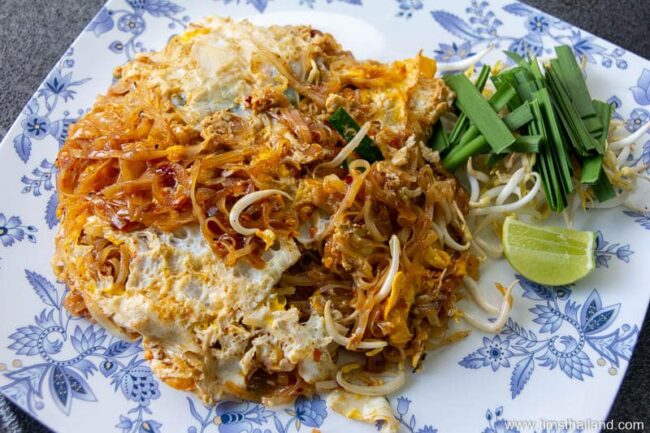
The Noodles
Khorat noodles are made with only rice flour (regular rice, not sticky rice) and water and are so tender they don’t need to be soaked before being tossed into the wok. When cooked, they come out soft and a little chewy. The noodles for pat thai are also made of rice, but include tapioca powder to firm them up.
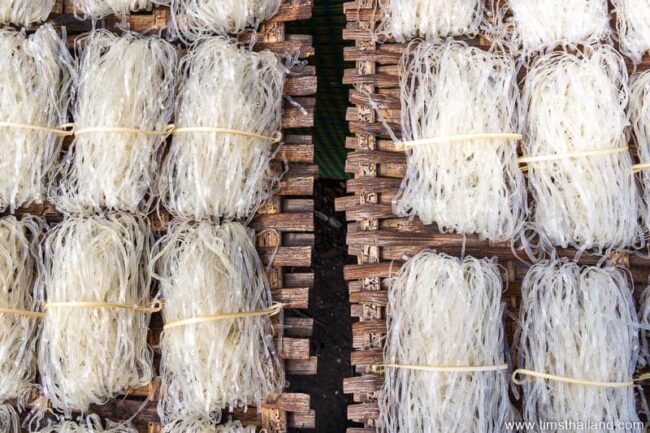
Khorat noodles have several names in Thai, all derived from where the noodles are made. Most common is the broad mee khorat (หมี่โคราช), followed by mee kratok (เส้นหมี่กระโทก)—Amphoe Dan Kratok is the former name of Amphoe Chok Chai, which seems to produce more noodles than anywhere else. There is also mee chok chai (หมี่โชคชัย), mee taku (หมี่ตะคุ)—after Ban Taku, a village in Pak Thong Chai district—and mee phimai. (หมี่พิมาย). Regardless of the name, there is no difference in the noodles except that during the making, the uncut sheets of mee phimai are brushed with vegetable oil to prevent them from sticking to each other, while all the others are typically coated with pork lard. (Hence phimai noodles are vegan and the others should be assumed not to be.) You will also find many people in Phimai insisting that mee phimai is softer than the others, but I challenge anyone to pick them out in a side-by-side comparison using taste, touch, or sight.
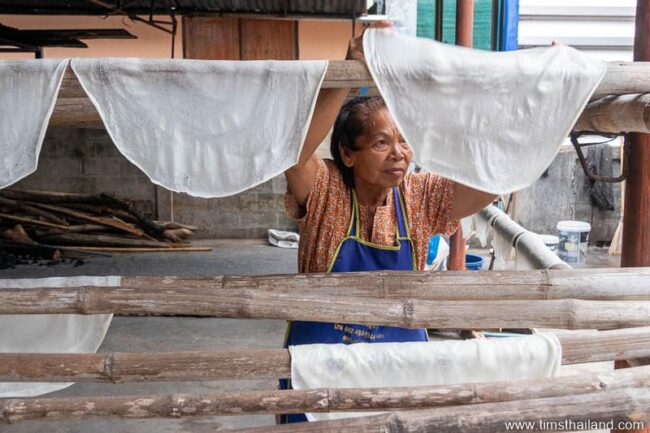
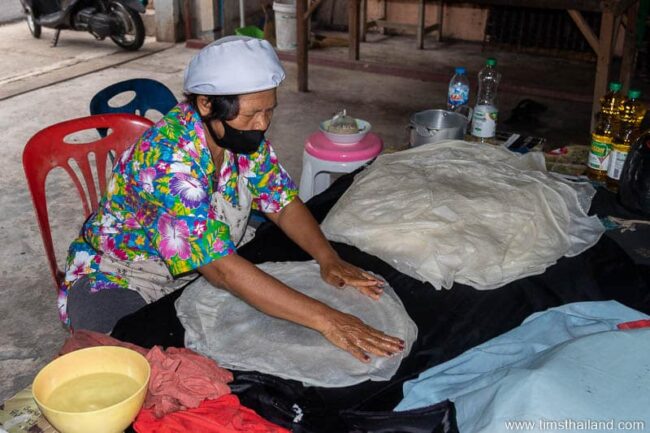
While most khorat noodles are still handmade and sundried (including all mee phimai), a few businesses have mechanized their noodle-making in recent years. Many locals distrust these, believing that the owners add some tapioca powder to save money. As some other people suggest, it might also be that the machine-made noodles are stiffer as a result of the process rather than the ingredients. Regardless, serious cooks buy their noodles fresh from small producers they know and trust.
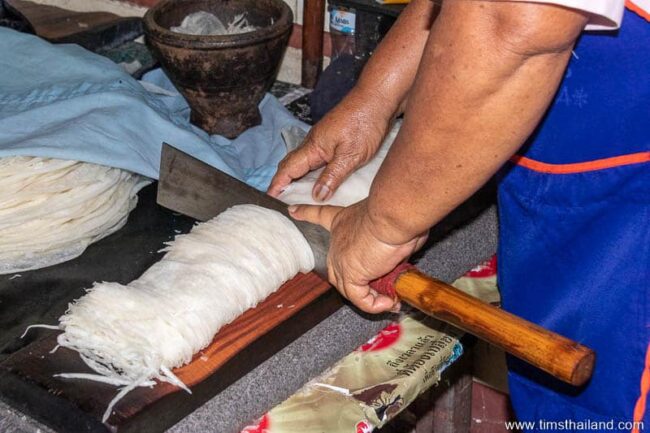
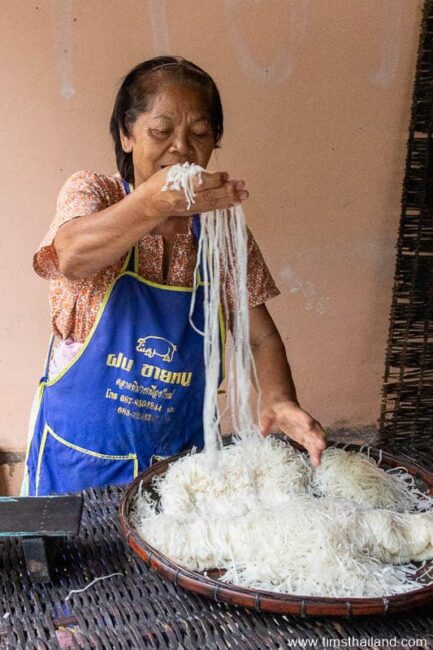
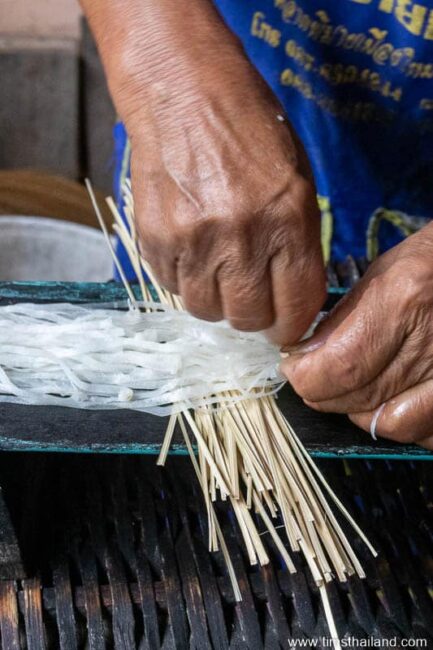
One modern twist on khorat noodles is adding some natural color: squash for yellow, tomato for pink, and ivy gourd, kale, or pandan for green. Mostly this is done for noodles sold at souvenir shops. Order pat mee khorat in a restaurant and you will surely get the regular white noodles. While khorat noodles are seldom sold outside Khorat (they are sometimes found in nearby provinces like Khon Kaen and Buriram), you can buy them online. If you are cooking yourself and normal pat thai noodles are all you can get, it can still turn out good.
The Meal
While pat mee khorat looks a lot like pat thai, their flavors have very little in common. Pat thai is, by comparison, quite plain. Pat mee khorat boosts the flavor by using black soy sauce, fermented soybean paste, and crushed red chili pepper. Pork is the primary protein, and chicken is a pretty common second choice. You might find shrimp, grilled fish, chicken entrails (liver, heart, gizzard) or beef on some menus, but it’s rare. It’s almost always served with garlic chives and a lime slice and topped by a fried egg. Note that most of the pat mee khorat recipes found online use fish sauce, which is typical of Thai food, but cooks in Khorat traditionally use salt instead.
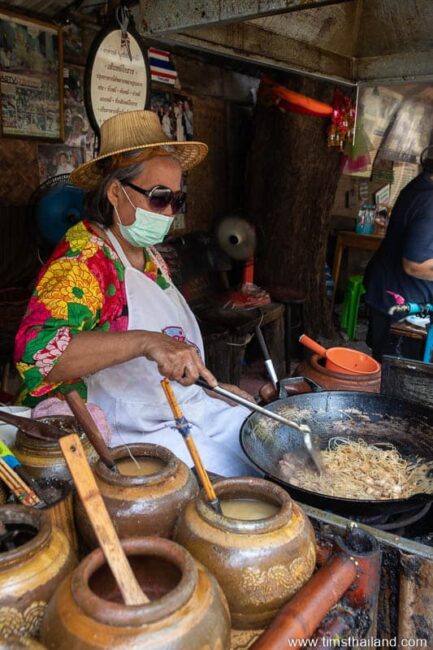
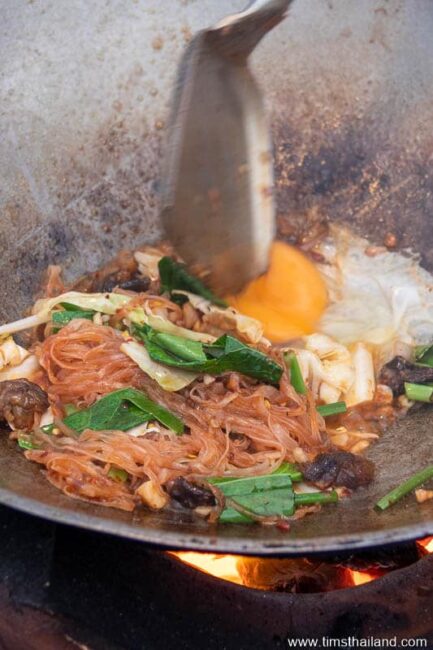
One other notable difference between pat thai and pat mee khorat is that most homes will always have all the ingredients for the latter in their kitchen, so it’s something someone can just whip up any time. Few people keep the tofu, pickled turnip, small dried shrimp, and peanuts needed for proper pat thai, so they would have to hit a market if they want to cook it.
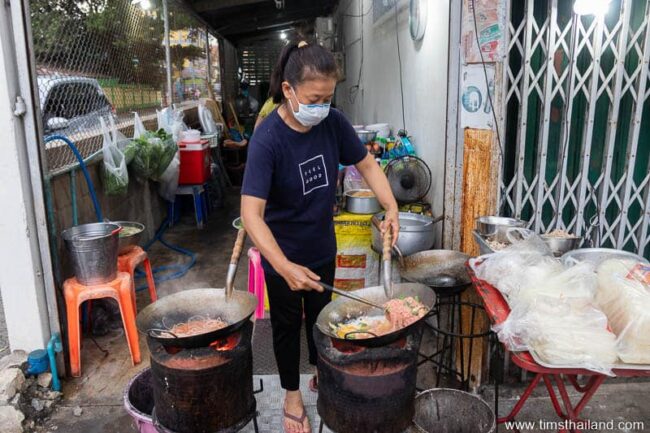
If you want to try making pat mee khorat yourself, here is an authentic recipe from the Thun Thun Channel on YouTube. The only thing missing is the fried egg.
Sauce
Palm Sugar – 4 tbsp
Garlic – 6 cloves
Shallots – 4 bulbs
Tamarind Concentrate – 4 tbsp
Fermented Soybean Paste – 2 tbsp
Thai Dark Soy Sauce – 3.5 tsp (make sure it is a sweet dark soy sauce, not the salty kind)
Toasted Chili Flakes – 1/2 tbsp
Vegetable Oil – 2 tbsp (to make the sauce)
Other Ingredients
Pork Belly – 1/2 lb (or any kind of protein you like)
Vegetable Oil – 1 tbsp (to cook meat)
Asian Garlic Chives – 1 bundle (about 7 stalks)
Bean Sprouts – 2 handfuls
Rice Stick Noodles – 200g
Water – roughly 2 cups (start with a little less and gradually add more if you need to, depends on the brand of your noodles)
One quirk in the pat mee khorat story is that the little town of Phimai has its own version—called pat mee phimai, of course—that adds ketchup and often also Thai chili sauce (aka Thai Sriracha sauce). The other difference is that chicken is much more popular than pork. Originally grilled catfish was the protein of choice in Phimai, though few restaurants offer the option these days. While I definitely prefer the standard pat mee khorat, the ketchup taste is a pretty small part of the overall flavor and the visibly reddish phimai version can be good too. I have never seen ketchup or “saut prik” in the mix outside of Phimai town, and talking to people elsewhere in the province, it seems few even know that Phimai does its own thing.
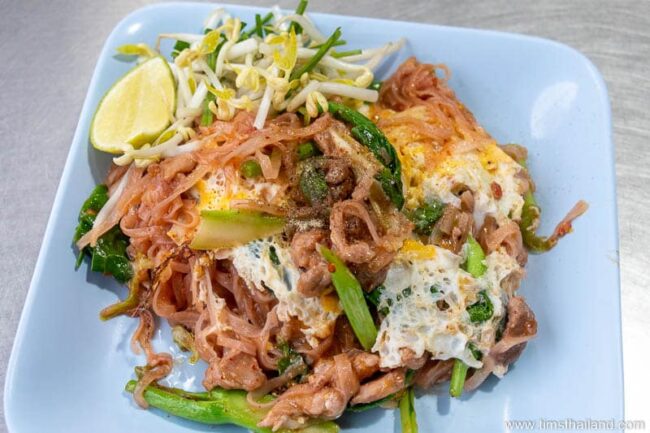
Pat mee khorat can be a tricky dish to order if you don’t speak Thai. First, some restaurants cook pat thai using khorat noodles and call it pat mee khorat. Since pat mee khorat literally means “stir-fried khorat noodles,” they are not out of line to do so. Places specializing in pat mee khorat will never do this, but if you are in a restaurant with a large menu, you need to ask about it. Also, since many Thais believe that foreigners want to eat bland food (sadly, there is some truth to this), some cooks will intentionally make pat mee khorat wrong, and it tastes terrible. This has happened to me three times (all in Phimai) even though I ordered in Thai and told the cook I can eat spicy food and wanted to eat the traditional dish with no modifications for me being a farang. Some people just think they know better than you.
If you happen to come up to Isan, here are my favorite places to eat pat mee khorat.
Khorat City – Ba Aom Kua Mee Khorat (ป้าอ้อม ขั่วหมี่โคราช)
Chok Chai City – Rahn Pat Mee Kratok Ba Bleuang (ร้านผัดหมี่กระโทก ป้าเปลื้อง)